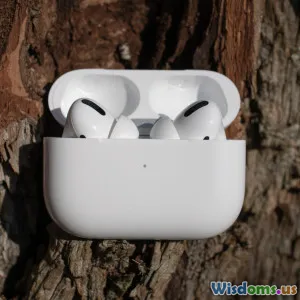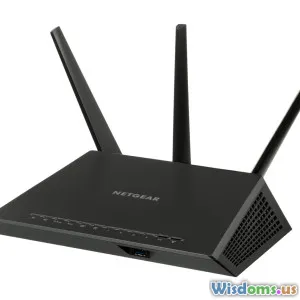
Wearable Tech Trends That Will Change Fitness in 2024
7 min read Explore emerging wearable tech trends revolutionizing fitness in 2024, enhancing health tracking, personalized workouts, and user engagement like never before. (0 Reviews)
Wearable Tech Trends That Will Change Fitness in 2024
In the ever-evolving landscape of fitness, 2024 promises to be a groundbreaking year, driven by revolutionary advances in wearable technology. These devices are no longer just step counters or heart rate monitors; they are sophisticated health ecosystems on your wrist, body, or even embedded in clothing, delivering precise data and actionable insights that empower users like never before.
Imagine wearables that adapt intelligently to your body’s unique needs, detect early signs of injury before pain strikes, or offer tailored coaching crafted by AI analyzing thousands of data points in real time. This fusion of technology and fitness is set to redefine how we approach health, exercise, and wellness.
Let’s explore the key wearable tech trends in 2024 poised to reshape fitness landscapes worldwide.
1. AI-Powered Personalized Fitness Coaching
Artificial Intelligence has evolved beyond simple algorithms. In 2024, AI embedded in wearables will deliver hyper-personalized fitness coaching, tailoring routines based on your unique body responses, history, and goals.
For example, devices like the latest Garmin smartwatches and Whoop straps now analyze training load, sleep quality, and recovery metrics to suggest adjustments in real-time. This means if your recovery score is low, your wearable will recommend lighter workouts or additional rest, helping prevent burnout and injury.
A recent study from the University of California demonstrated that AI-guided workout plans resulted in a 20% improvement in endurance and strength metrics over traditional routines over 12 weeks, highlighting tangible benefits beyond generic advice.
Real-World Insight:
Stephanie Myers, a personal trainer from Chicago, reports: "My clients using AI-driven wearables gain new insights daily. It makes training more efficient, helping them avoid plateaus and stay motivated."
2. Advanced Biometric Sensors for Comprehensive Health Tracking
Next-generation sensors incorporated in 2024’s wearables provide remarkably detailed biometrics previously unattainable outside medical environments. These include:
-
Continuous Glucose Monitoring (CGM): Devices like the newly FDA-cleared SugarBeat wearable enable real-time glucose tracking without needles, invaluable not only for diabetics but also biohackers optimizing energy.
-
Hydration and Electrolyte Balancing: Novel sensors now estimate hydration levels through sweat analysis, guiding timely fluid intake.
-
Blood Oxygen Variability: Beyond simple SpO2 readings, variability metrics help detect early respiratory distress or overtraining.
This wealth of data fosters holistic understanding—not just fitness but metabolic health, nutrition needs, and recovery status.
Example:
The Biostrap EVO model integrates multi-wavelength PPG sensors, ECG, and bioimpedance, capturing nuanced cardiac and muscular data for athletes seeking precision monitoring.
3. Seamless Integration with Augmented Reality (AR) Fitness Experiences
Wearable tech’s fusion with AR is poised to transform workout environments, making exercise more immersive, social, and engaging.
Imagine wearing AR glasses that overlay running routes in your local park, highlight terrain challenges, or provide a virtual personal trainer guiding every movement. Platforms like Tonal and Supernatural already blend physical workouts with virtual spaces, but expect this integration to deepen in 2024.
AR-driven group sessions, enhanced with spatial awareness wearables, will allow remote fitness communities to interact intuitively, fostering motivation and accountability.
Supporting Data:
A report from IDC forecasts that by 2025, over 60 million AR glasses units will be sold globally, with fitness as a leading application driver.
4. Enhanced Wearable Comfort and Sustainability
Consumer demand increasingly values comfort and eco-friendliness. In 2024, wearables will feature ultra-lightweight, flexible materials like graphene-infused fabrics that breathe well and conform to body movements.
Moreover, brands like Fitbit and Oura are committed to sustainability by incorporating recycled materials and modular designs that allow easy component replacement, extending device lifespan and reducing e-waste.
These improvements make daily wear more comfortable, thus encouraging consistent usage crucial for meaningful fitness tracking.
5. Mental Wellness Integration
Modern fitness brands recognize that mental health strongly affects physical performance. Therefore, 2024 wearables will widely integrate stress and mood tracking using biometrics such as heart rate variability (HRV), galvanic skin response, and sleep quality.
Features including guided mindfulness sessions, stress prediction alerts, and breath regulation coaching become standard, supporting users’ psychological balance alongside physical health.
Meditation app Headspace’s partnership with Whoop exemplifies this trend, enhancing wearable data with bespoke mental wellness programs.
Conclusion: Embracing the Future of Fitness Wearables
The wearable technology trends emerging in 2024 signal a major shift toward smarter, more personalized, and holistic fitness experiences. These devices no longer simply record data—through AI coaching, advanced biometrics, immersive AR, sustainable design, and mental wellness integration, wearables become indispensable fitness partners.
For fitness enthusiasts, athletes, and health-conscious individuals, embracing these technologies presents a transformative opportunity to optimize workouts, prevent injury, and sustain motivation.
Staying informed and adopting these innovations will empower your fitness journey like never before—making 2024 the year your wearable truly transforms how you move, recover, and thrive.
Author’s note: Staying ahead means not only tracking steps but understanding complex data layers your devices collect. Keep exploring, and harness wearable tech’s full potential this year and beyond.
References
- University of California Study on AI in Fitness Coaching, 2023.
- IDC Report on AR Glasses Market Forecast, 2023.
- Fitbit Sustainability Report, 2023.
- FDA briefing on SugarBeat CGM device clearance, 2023.
- Collaboration announcement: Headspace and Whoop, 2023.
Image credits: [Generic wearable tech images from credible sources like Unsplash/Official Brand Releases]
Rate the Post
User Reviews
Popular Posts



















